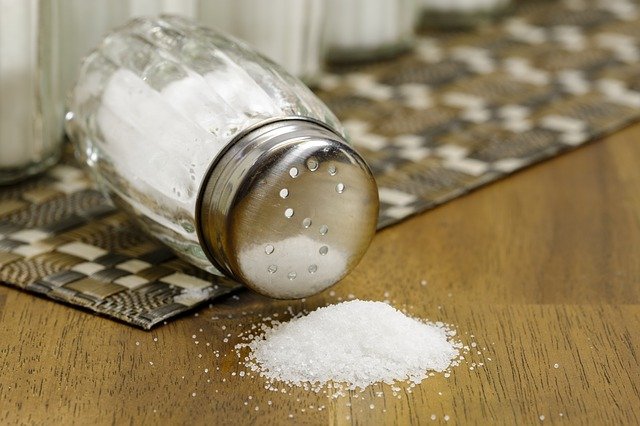Did you go overboard with the salt in one of your dishes? Don’t throw out your meal just yet — these simple tips and tricks can help bring it back to life. There’s no need to waste all of those ingredients or struggle to swallow an oversalted dish.
How To Fix A Dish That’s Too Salty
Add Water

A little bit of water may be able to combat the saltiness. Be sure to add the water slowly and to stop periodically to taste the food. When water is used to fix an oversalted soup or sauce, it may have an adverse effect on the consistency of the dish. If this is the case, add more ingredients to thicken the meal.
Use Extra Ingredients

Sometimes adding non-salty ingredients to a soup or sauce will help absorb some of the saltiness. Starchy foods such as rice or noodles will thicken the dish and reduce some of the effects of dilution. Non-salty vegetables can be added to soup to absorb some of the salt and make the dish heartier.
Increase The Acidity

A squeeze of lemon or lime or a splash of vinegar can cut through the salty flavor. The acidity of these ingredients is the perfect cover-up, but a little goes a long way. Acidic ingredients work for almost any recipe.
Add Sweetness

Depending on how salty the dish is, you may be able to offset the saltiness with a little sweetness. Sugar, honey, fruit, condensed milk, creams, and even sweet vegetables could be added to the recipe to counteract the saltiness, depending on the dish. For instance, dark brown sugar could be added to a darker sauce. Cream could be added to a tomato sauce. (Note that adding cream would change the tomato sauce into a creamy tomato sauce.)
Sugar and acidic ingredients work well together in oversalted foods. Start by adding one teaspoon each of sugar and vinegar, and then repeat until your dish tastes the way you want it to.
Add Heat

This technique works well when combined with other remedies. A hot dish will taste less salty than it is. Colder foods tend to taste saltier. If you can’t serve your meal at a warmer temperature, offer a hot beverage on the side.
How To Prevent Oversalting

An ounce of prevention is worth a pound of cure. Here’s how to avoid any salty mishaps:
Ensure Your Salt Shakers Are Working Properly

Make sure your salt shakers are in working order. There is nothing more devastating than having the bottom or top lid come loose on your salt shaker, creating a waterfall effect while you’re cooking. What a mess!
Salt Periodically

While cooking, it’s essential to add salt (and pepper) in small amounts throughout the recipe, stopping to taste how the dish is coming along. This habit prevents oversalting and produces mouthwatering flavor.
Salt Higher Up

When you season your dish, be careful not to hold the shaker too close to the pot. Doing so will create salty clumps in your dish. Instead, gently sprinkle the salt from 10 inches above the pot. This will create a more even seasoning spread across the dish.
Check Pre-Packaged Ingredients

It’s a good idea to check the sodium content in pre-packaged food. Pre-packaged food can contain an abundance of salt, and that salt will affect the flavor of your dish before you even start seasoning yourself. The following items commonly added to recipes are high in sodium:
- canned vegetables
- broth/bouillon cubes
- cheese
- baking soda and baking powder
- cured meats
- sauces
- regular soy/reduced
- fish
- teriyaki
- oyster
- hot pepper
- steak
- reduced-fat salad dressing
- barbeque
- Worcestershire
- hamburger relish
An oversalted dish can put a damper on things. However, it doesn’t always have to be a total loss. There are many ways you can save your meal from the garbage. A simple fix such as a bit of water, a splash of vinegar, or a dash of sugar might save the day. If you couldn’t save your dish this time, no need to worry — just follow our tips to avoid oversalting in the future.
